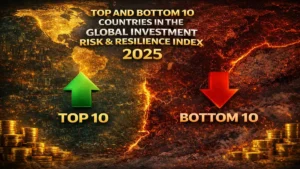Discriminatory policies of Myanmar’s government since the late 1970s have compelled hundreds of thousands of Muslim Rohingya to flee their homes in the predominantly Buddhist country. Most have crossed by land into Bangladesh, while others have taken to the sea to reach India, Indonesia, Malaysia, and Thailand.
Bank Maha Pack includes Live Batches, Test Series, Video Lectures & eBooks
Beginning in 2017, renewed violence, including reported rape, murder, and arson, triggered an exodus of Rohingya, as Myanmar’s security forces claimed they were carrying out a campaign to reinstate stability in the country’s western region. The United Nations has said that those forces showed “genocidal intent,” and international pressure on the country’s elected leaders to end the repression continues to rise.
Who are the Rohingya?
The Rohingya are an ethnic Muslim minority who practice a Sufi-inflected variation of Sunni Islam. There are an estimated 3.5 million Rohingya dispersed worldwide. Before August 2017, the majority of the estimated one million Rohingya in Myanmar resided in Rakhine State, where they accounted for nearly a third of the population. They differ from Myanmar’s dominant Buddhist groups ethnically, linguistically, and religiously. The Rohingya trace their origins in the region to the fifteenth century, when thousands of Muslims came to the former Arakan Kingdom. Many others arrived during the nineteenth and early twentieth centuries, when Rakhine was governed by colonial rule as part of British India. Since independence in 1948, successive governments in Burma, renamed Myanmar in 1989, have refuted the Rohingya’s historical claims and denied the group recognition as one of the country’s 135 official ethnic groups. The Rohingya are considered illegal immigrants from Bangladesh, even though many trace their roots in Myanmar back centuries.
What is the legal status of the Rohingya?
The government refuses to grant the Rohingya citizenship, and as a result most of the group’s members have no legal documentation, effectively making them stateless. Myanmar’s 1948 citizenship law was already exclusionary, and the military junta, which seized power in 1962, introduced another law twenty years later that stripped the Rohingya of access to full citizenship. Until recently, the Rohingya had been able to register as temporary residents with identification cards, known as white cards, which the junta began issuing to many Muslims, both Rohingya and non-Rohingya, in the 1990s. The white cards conferred limited rights but were not recognized as proof of citizenship.
In 2014 the government held a UN-backed national census, its first in thirty years. The Muslim minority group was initially permitted to identify as Rohingya, but after Buddhist nationalists threatened to boycott the census, the government decided Rohingya could only register if they identified as Bengali instead.
Similarly, under pressure from Buddhist nationalists protesting the Rohingya’s right to vote in a 2015 constitutional referendum, President Thein Sein canceled the temporary identity cards in February 2015, effectively revoking their newly gained right to vote. (White card holders were allowed to vote in Myanmar’s 2008 constitutional referendum and 2010 general elections.) In the 2015 elections, which were widely hailed by international monitors as free and fair, no parliamentary candidate was of the Muslim faith.
Why are the Rohingya fleeing Myanmar?
The Myanmar government has effectively institutionalized discrimination against the ethnic group through restrictions on marriage, family planning, employment, education, religious choice, and freedom of movement. For example, Rohingya couples in the northern towns of Maungdaw and Buthidaung are only allowed to have two children. Rohingya must also seek permission to marry, which may require them to bribe authorities and provide photographs of the bride without a headscarf and the groom with a clean-shaven face, practices that conflict with Muslim customs. To move to a new home or travel outside their townships, Rohingya must gain government approval. Moreover, Rakhine State is Myanmar’s least developed state, with a poverty rate of 78 percent, compared to the 37.5 percent national average, according to World Bank estimates. Widespread poverty, poor infrastructure, and a lack of employment opportunities in Rakhine have exacerbated the cleavage between Buddhists and Muslim Rohingya. This tension is deepened by religious differences that have at times erupted into conflict.
What’s caused the recent exodus?
Clashes in Rakhine broke out in August 2017, after a militant group known as the Arakan Rohingya Salvation Army (ARSA) claimed responsibility for attacks on police and army posts. The government declared ARSA a terrorist organization and the military mounted a brutal campaign that destroyed hundreds of Rohingya villages and forced nearly seven hundred thousand Rohingya to leave Myanmar. At least 6,700 Rohingya were killed in the first month of attacks, between August 25 and September 24, 2017, according to the international medical charity Doctors Without Borders. Myanmar’s security forces also allegedly opened fire on fleeing civilians and planted land mines near border crossings used by Rohingya to flee to Bangladesh.
Where are the Rohingya migrating?
Bangladesh: Most Rohingya have sought refuge in nearby Bangladesh, which has limited resources and land to host refugees. More than nine hundred thousand Rohingya refugees are in the country, according to the UN refugee agency. Many live in crowded camps in Cox’s Bazar district, now home to the world’s largest refugee camp. Nearly four hundred thousand children in the camps lack access to education, since teachers are banned from using both Bangladeshi and Myanmar curricula in the camps and Rohingya children are barred from enrolling in schools outside the camps. At the same time, the risk of disease outbreak in camps is high, with health organizations warning of possible outbreaks of measles, tetanus, diphtheria, and acute jaundice syndrome. More than 60 percent of the available water supply in refugee camps is contaminated, increasing the risk of spread of communicable and water-borne diseases. Some refugees have turned to smugglers, paying for transport out of Bangladesh and Myanmar and risking exploitation, including sexual enslavement.
India: Eighteen thousand Rohingya refugees have registered with the UN refugee agency, though Indian officials estimate there are forty thousand Rohingya throughout the country. The Government considers Rohingya to be illegal immigrants and has worked to repatriate them. Since late 2018, India has reportedly sent dozens of refugees back to Myanmar, moves criticized by the United Nations and human rights groups.
How is the region responding?
Protesters have at times gathered in cities in Pakistan, India, Thailand, Indonesia, and Bangladesh to denounce the killing and persecution of Rohingya. Bangladesh’s foreign minister condemned the violence in Rakhine as “genocide” in September 2017 and Indonesia and Malaysia called on the Myanmar authorities to halt their campaign and bring an end to the violence.
How has the rest of the world responded?
In November 2019, Gambia, on behalf of the fifty-seven-nation Organization of Islamic Cooperation, filed the first international lawsuit against Myanmar at the International Court of Justice, accusing the country of violating the UN Genocide Convention. The court unanimously ruled in January 2020 that Myanmar must take emergency measure to protect Rohingya from violence and preserve evidence of possible genocide. A final ruling in the case could take years. Separately, the ICC authorized an investigation into alleged atrocities in November 2019.




 Govt. Extends Tenure of SBI MD Ashwini K...
Govt. Extends Tenure of SBI MD Ashwini K...
 Google Launches Its First-Ever Credit Ca...
Google Launches Its First-Ever Credit Ca...
 Top and Bottom 10 Countries in the Globa...
Top and Bottom 10 Countries in the Globa...







